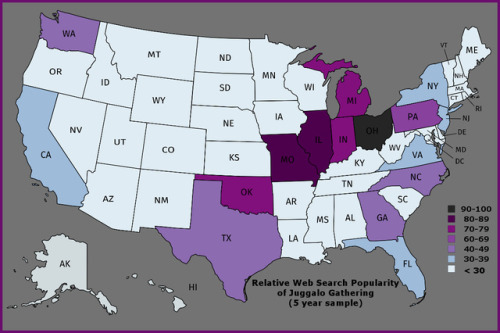
“Juggalo Gathering” Interest by US State.
Last week, the San Francisco Bicycle Coalition (SFBC) launched a letter-writing drive to make sure protected bike lanes are part of SFMTA’s Upper Market Street Safety Project from Octavia to the start of the Duboce bicycle path. And, Streetsblog learned this afternoon, it looks as if the campaign worked.
First, from the article published last week on the SFBC web page, announcing the letter-writing drive:
We’ve heard time and time again about the chronic double-parking in bike lanes, a well-known issue for Upper Market. Your support for protected bike lanes will use smart design to directly address this issue, but we know more needs to be done. If you want to see protected bike lanes extend further up Market, we encourage you to write a letter to new District 8 Supervisor Jeff Sheehy and the SF Municipal Transportation Agency (SFMTA). [Note: his district encompasses Upper Market]
Some more background from the SFMTA web page about the project:
Upper Market Street is one of San Francisco’s most popular corridors, but it also has some of the city’s highest collision rates. In the five-year period from 2007 to 2012, there were 27 collisions involving vehicles and pedestrians, 32 vehicle-bicycle collisions and 102 vehicle-vehicle collisions on Market Street between Octavia Boulevard and Castro street.
Given those stats, it’s astounding that installing protected bike lanes was ever considered an optional part of the project. And after conversations between SFBC leadership and Sheehy, it was unclear if there were even enough votes on the SFMTA Board of Directors to assure protected bike lanes remained in the plan. (Note that Sheehy was appointed by Mayor Lee to replace Scott Wiener.)
But late this afternoon Streetsblog received the following statement from Sheehy, texted via one of his staffers: “I support the work that the community, businesses, street safety advocates, and the SFMTA have done to develop the Upper Market street safety project, including the protected bike lanes [emphasis added]. I look forward to the implementation of this critical safety improvement as soon as possible.”
Good news for safe-streets advocates. And kudos to SFBC on a short but apparently effective campaign.
Stephen LaPorteWay to go!
Wendy Alfsen, long-time Executive Director of California Walks, is retiring. Sort of. She has taken a new title of Senior Director, and former Deputy Director Tony Dang has moved up to take the reins of the advocacy organization.
The change is coming “at a particularly interesting time for transportation,” as Dang put it. Last year’s legislative session ended without an agreement on transportation funding, despite it being a top priority for Governor Jerry Brown. Now the new session has begun, but new proposals are the same as the old ones.
The national policy landscape is also full of uncertainties. “There are going to be a lot of major issues that take up a lot of air in the room,” said Dang, “and transportation will likely have to take a little bit of a back seat. But that doesn’t mean that [California Walks] or our partners will step back or stop working on these issues.”
“The beauty of this work,” said Dang, “is it’s so simple: if we create communities where people of all ages and incomes and abilities can walk safely, we will create a better society. But if the transportation system doesn’t work for folks, we can’t relieve a lot of the societal problems that we are faced with nationally.”
Dang says he is excited to be taking over as Executive Director, and Alfsen is enthusiastic as well. “Tony is doing a great job,” she said.
Dang has been working for California Walks for three years, taking on increasingly more responsibility over time. Now he will also be in charge of strategic planning for the organization, which works on two fronts to advance walkable communities. At the state level, California Walks weighs in on policymaking decisions, ensuring that pedestrian concerns are included in early stages of proposed laws as well as planning and regulations at state agencies. At the local level, the organization provides training and support for communities looking to improve local walking conditions.
California Walks also hosts a biannual summit called “Peds Count!” to share knowledge and information among advocates and agencies. Its staff conducts walk audits to understand the pedestrian experience in specific places, and trains local advocates to conduct their own.
Alfsen helped found California Walks in 2003 as an informal statewide network of local advocacy groups like Walk and Roll Berkeley, where she was working at the time. Several years later she helped it become a formal organization, providing a state-level voice for local groups.
“When I first started doing this work, there were two statewide committees at Caltrans that I could work with,” said Alfsen. “Now, just within Caltrans alone, there are ten or fifteen different advisory committees and working groups working on pedestrian and related issues. And then there are other state agencies like the Air Resources Board and the California Transportation Commission.”
“The strategy of being at the table is important in creating the change we want: to move the transportation system to be more sustainable,” said Alfsen. “But not everyone has been at the table; historically it’s been restricted to the rich and powerful, and ordinary communities and citizens have been not included until recently.”
When asked what her favorite projects have been during her time at California Walks, Alfsen had a hard time choosing. “I’m a personal fan of both policy and personal empowerment. Whenever those can be brought together, I’m excited,” she said. One favorite project was a recent success: a youth-led community engagement project that resulted in Active Transportation Program funding for a sidewalk in an unincorporated area in the Greenfield neighborhood in Bakersfield.
California Walks had been training and mentoring youth leaders, who took charge of the project. “California Walks didn’t create the idea, or apply for the grant,” she said. “It was not our baby. The youth leaders did all the work of organizing and publicizing meetings, gathering signatures, making it happen. We provided some information about how to find technical expertise, and how to access resources.”
“Of course, California Walks had worked to help create the Active Transportation Program and to make sure pedestrian projects were included in it,” she added.
She was just as excited about state policy work she’d been involved in, including an effort to remove barriers from the vehicle code so that “senior zones”—low-speed areas near senior housing, similar to school zones—could be created more easily. She’s working now with Caltrans staff to create signage standard to bring more attention to these zones, like the bright green signs and flashing lights used near some schools.
“All of this change is incremental, but it makes a big difference on the ground,” she says about her policy work. “As we’re developing more multifamily housing along transit corridors—and recognize that those transit corridors are also high-speed arterials—the question becomes one of how people can get across the street safely.”
It’s also a question of funding priorities. The U.S. has spent most transportation money making it easier for people to travel in cars. Now the country is faced with climate change resulting in part from the free and easy use of private gasoline-powered vehicles, as well as irremediable traffic congestion—and judging from the latest proposals out of the state capitol, funding priorities don’t seem to be changing.
Alfsen is enthusiastic about the potential for California Walks’ work to contribute to solving climate change. “And at a low cost,” she says. “More than 25 percent of all trips we make in California—for shopping, errands, school, and work, every trip we make—are one mile or less, and over forty percent are five miles or less. In fact, only twenty percent of ALL trips are over ten miles—yet we invest all of our resources on those trips.”
“Unfortunately, currently about half of the shorter trips are still made in single-occupant vehicles. If that could be reduced to ten or fifteen percent, we could make quite a bit of progress.”
To do that, communities need to transform themselves into places where people will choose to walk those short trips. That means taking into account many factors, which, according to Walk California’s website, include:
. . . elements of the built environment such as availability of continuous, level sidewalks and pathways, safe, accessible crossings, lighting vehicle speed, number of lanes and street width. Other factors that influence walking and walkability include real and perceived safety from crime, gang activity and aggressive dogs, graffiti, maintenance of trees and greenery, safe access to desired destinations (park, school, grocery, library, post office, etc.), public amenities like benches, drinking fountains, public art, restrooms, and trash cans, among many others.
That covers a pretty wide range of things that need addressing. At the same time, advocating for pedestrians can be hard for some people to take seriously. “Like breathing or drinking water, we learned how to walk when we were small children, and we take for granted. Even the word pedestrian has come mean everyday, monotonous, boring,” said Alfsen.
And in transportation decision making, no one was taking notice of walking. “We have devoted our resources to funding ‘limited access’ travel for cars,” said Alfsen, “but the only access that’s been limited is pedestrian access.”
“We have squandered our resources.”
The irony is that, as Dang pointed out, “everybody experiences walking basically every single day. Even people who only walk from a parking garage to an office—everyone has had experiences of unsafe crossings.”
As the new Executive Director, Dang plans to continue the work of building a coalition among like-minded organizations. High on his priority list is to ensure that proposals for transportation funding incorporate equitable approaches to who gets funding, and to make sure that transportation investments reflect state climate change goals, rather than merely continue to encourage current unsustainable means of travel.
California Walks will also be focusing on raising awareness among newly elected lawmakers of the importance of these issues.
 Join us at the Internet Archive this Saturday January 7 for a government data hackathon! We are hosting an informal hackathon working with White House social media data, government web data, and data from election-related collections. We will provide more gov data than you can shake a script at! If you are interested in attending, please register using this form. The event will take place at our 300 Funston Avenue headquarters from 10am-5pm.
Join us at the Internet Archive this Saturday January 7 for a government data hackathon! We are hosting an informal hackathon working with White House social media data, government web data, and data from election-related collections. We will provide more gov data than you can shake a script at! If you are interested in attending, please register using this form. The event will take place at our 300 Funston Avenue headquarters from 10am-5pm.
We have been working with the White House on their admirable project to provide public access to eight years of White House social media data for research and creative reuse. Read more on their efforts at this blog post. Copies of this data will be publicly accessible at archive.org. We have also been furiously archiving the federal government web as part of our collaborative End of Term Web Archive and have also collected a voluminous amount of media and web data as part of the 2016 election cycle. Data from these projects — and others — will be made publicly accessible for folks to analyze, study, and do fun, interesting things with.
At Saturday’s hackathon, we will give an overview of the datasets available, have short talks from affiliated projects and services, and point to tools and methods for analyzing the hackathon’s data. We plan for a loose, informal event. Some datasets that will be available for the event and publicly accessible online:
Much of this data was collected in partnership with other libraries and with the support of external funders. We thank, foremost, the current White House Office of Digital Strategy staff for their advocacy for open access and working with us and others to make their social media open to the public. We also thank our End of Term Web Archive partners and related community efforts helping preserve the .gov web, as well as the funders that have supported many of the collecting and engineering efforts that makes all this data publicly accessible, including the Institute of Museum and Library Services, Altiscale, the Knight Foundation, the Democracy Fund, the Kahle-Austin Foundation, and others.

–Jill Lepore, from “The Cobweb: Can the Internet be Archived?” in the New Yorker, January 26, 2015
For twenty years, here at the Internet Archive, we’ve been trying to capture lightning in a bottle. How do you archive the “ethereal, ephemeral, unstable and unreliable“ Web? Since 1996, that has been part of our daily work. We crawl the Web, preserve it, try to make it play back, as if you were back in 1999 on your own GeoCities page, delighting in that animated Under Construction GIF you just posted.
On October 26, 2016, we will be celebrating our 20th Anniversary, and we hope you will join us. We’ve been grappling with how to convey the enormity of our task. How do you visualize the universe of the Web—the audio, images, Web pages, and software that we’ve been archiving for the last 20 years? When you come to our celebration, we’ll be presenting the work of media innovators, each trying to capture the ephemeral Web:
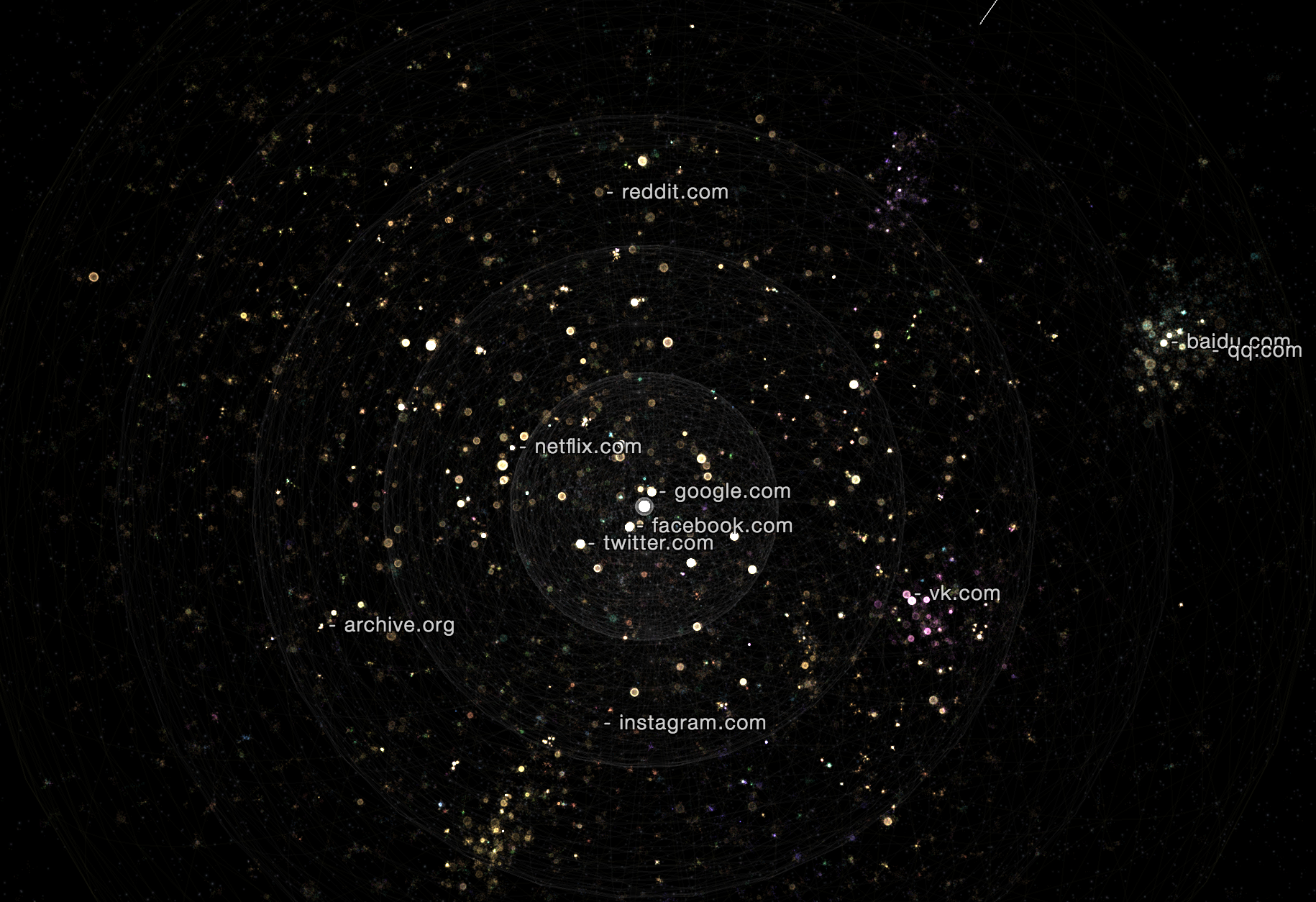
One view from Cyberscape, Owen Cornec and Vinay Goel’s visualization of the top 800,000 Web sites
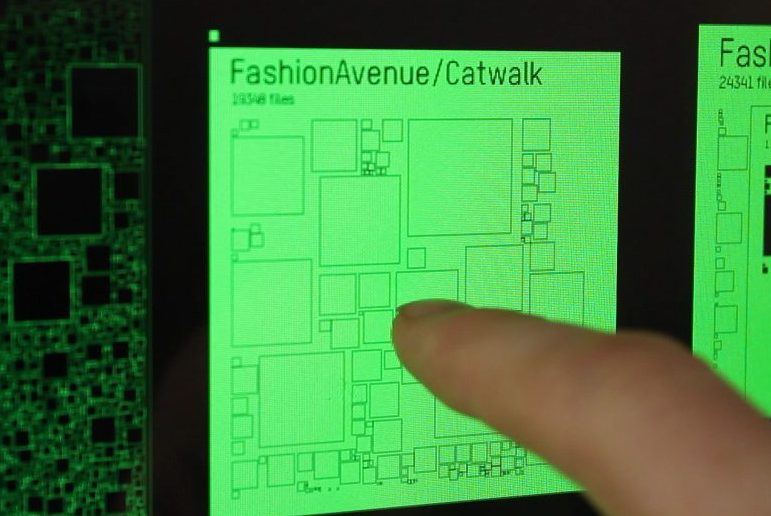

Paul D. Miller aka DJ Spooky will perform a newly commissioned piece on October 26.
![]()
And to round up the evening, Internet Archive Founder, Brewster Kahle, will reflect upon his lifelong obsession—backing up the Web, making it more reliable and secure. Our work is just beginning, but if we are successful, new generations of learners will be able to access the amazing universe of the Web, learn from it, and build societies that are even better.
GET YOUR FREE TICKET TO “How to Build an Archive—20 Years in the Making.” Wednesday, October 26, 2016 from 5-9:30 p.m. at the Internet Archive, 300 Funston Avenue, San Francisco.
Stephen LaPorte“Protected bike lanes–that’s all I care about”

Kristin Smith moderated a member Q&A with Bike Coalition director Brian Wiedenmeier. Photo: Liam Brooks.
Yesterday evening some 200 San Francisco Bicycle Coalition (SFBC) members came to the Brick and Mortar Music Hall at Duboce and Mission to meet SFBC’s Executive Director, Brian Wiedenmeier. They had bánh mì sandwiches, a few beers, and good conversation before a formal Q&A hosted by Kristin Smith, currently with SFMTA and former SFBC staffer.
The questions were varied, but key in the discussion was Mayor Edwin Lee’s recent Executive Directive, instructing the police, the parks department, and SFMTA to accelerate Vision Zero projects and specific bicycle infrastructure plans in response to last month’s deaths of two cyclists, Heather Miller and Kate Slattery.
By six, the venue was already crowded, with a hundred or so bikes parked in the valet stand outside. Participants were of varied ages and professions, but all had one thing in common–a passion for cycling and safe streets. “I’m interested in seeing what Brian has to offer,” said Matt Dove, an SFBC member since 2004. Dove is Director of Bicycle Programs for the Presidio Community YMCA. “I’m curious to see what he’ll do about inclusivity,” said Eliza Barrios, a tech support staffer with the Wikimedia Foundation. She was especially interested in efforts to expand bike infrastructure in under-served and outlying areas of San Francisco, such as the Bayview and the Tenderloin.
If there was a common theme in concerns from participants, it was skepticism about whether the Mayor’s new directive will lead to tangible change on the ground. “We get too stuck in the minutia of projects in San Francisco… we need leadership to stop being re-active and start being pro-active,” said Dove.

Delicious sandwiches, beer and a whole lot of frustration with SF bike infrastructure was shared prior to the formal Q&A. Photo: Liam Brooks.
“I’m essentially encouraged [by the Mayor’s directive],” said Adam Long, SFBC member and a bicycle advocate who has been featured in Streetsblog before. “But I’m discouraged by some of the vague deadlines.”
“I don’t think the city has my back,” said David Bach, a office administrator for a San Francisco tech company, about the Mayor’s directive. “I want to see the pedal to the metal [in installing bike infra], not more smoke!” Bach, who commutes by bike every day from near the San Francisco Zoo to Howard and 7th also asked why the city can manage to ban–and enforce the ban–on plastic bags and public nudity but not on texting and driving.
The perceived lack of speed in installing infrastructure was almost universally shared, although some seemed equally concerned about the quality of the infrastructure that has gone in to date. Steve Laporte, a San Francisco attorney, said portions of raised bike lane on Market Street are lacking because cars still park there. “Then I have to get off of it, go into traffic, and then I can’t get back on because it’s raised,” he said. He wants to see physical protection on the lane. “I see piecemeal fixes, but a bike commute isn’t piecemeal and everybody is only as safe as they are in the most dangerous section they have to ride on,” he said. “Protected bike lanes–that’s all I care about,” said another participant in the event.
Wiedenmeier himself, meanwhile, was happily socializing and hearing from members informally before the Q&A began. “People are frustrated by the rate of project delivery and double parking,” he told Streetsblog. “I love hearing from people about spot improvements… tweets etc. Our organization really relies on them.”
The formal portion of the event started at 7 p.m. Smith read questions from the SFBC members. The first question was on efforts to increase diversity. “Our membership is strong and steadily growing but we could do better to have it reflect the composition of San Francisco in terms of race, gender, ethnicity and geographic distribution,” Wiedenmeier said. “As a gay white man in my 30s, my experience is very different from a black person, a brown person, a woman of any race, or an older person. I won’t make assumptions about the experiences of other.” He added that the organization has to get Spanish and Cantonese materials and on-staff fluency. They also talked about double parking and cars blocking the bike lanes. “I think MTA and SFPD can do a better job of enforcement,” he said. “But SFPD could ticket on Friday night and Saturday the same problem comes up.” Instead, he opined, the answer is protected bike lanes that make it physically impossible to block the bike lane in the first place.
But will those lanes ever get installed? Wiedenmeier is hopeful that the Mayor’s Executive Directive can cut through what he calls the “culture of delay.”
“The Masonic improvements were approved and funded four years ago and broke ground last week! That’s an unacceptable amount of time.” he said. “But we have leverage now. We can go to the Mayor and say ‘you directed the city to get this done in nine months’ and we will call you out every time it doesn’t happen.”
While some in the audience remained skeptical of the Mayor’s ability to follow through, Wiedenmeier expressed confidence. “It’s a big deal. 1,700 people contacted the Mayor’s office. When that many people write in, change can happen.”
Stephen LaPorteNo thanks.
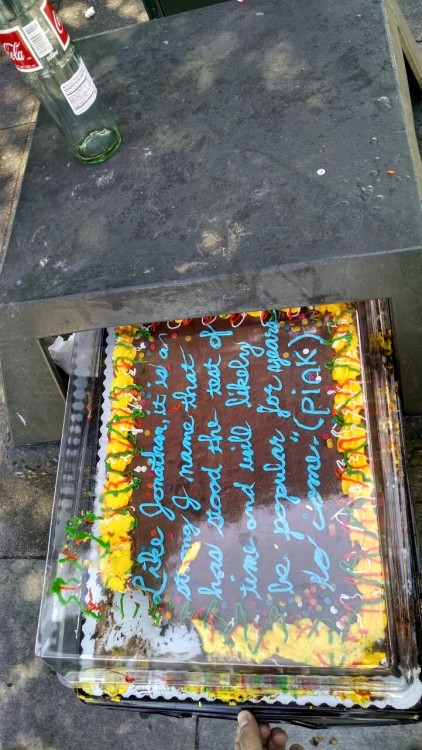
This cake was outside the store in a garbage can and had a price tag of $40 on it.
 The United States Copyright Office is seeking feedback on how the “notice and takedown” system created by the Digital Millennium Copyright Act, also known as the “DMCA Safe Harbors,” is working. Congress decided that in this country, users of the Internet should be allowed to share their ideas with the world via Internet platforms. In order to facilitate this broad goal, Congress established a system that protects platforms from liability for the copyright infringement of their users, as long as the platforms remove material when a copyright holder complains. The DMCA also allows users to challenge improper takedowns.
The United States Copyright Office is seeking feedback on how the “notice and takedown” system created by the Digital Millennium Copyright Act, also known as the “DMCA Safe Harbors,” is working. Congress decided that in this country, users of the Internet should be allowed to share their ideas with the world via Internet platforms. In order to facilitate this broad goal, Congress established a system that protects platforms from liability for the copyright infringement of their users, as long as the platforms remove material when a copyright holder complains. The DMCA also allows users to challenge improper takedowns.
We filed comments this week, explaining that the DMCA is generally working as Congress intended it to. These provisions allow platforms like the Internet Archive to provide services such as hosting and making available user-generated content without the risk of getting embroiled in lawsuit after lawsuit. We also offered some thoughts on ways the DMCA could work better for nonprofits and libraries, for example, by deterring copyright holders from using the notice and takedown process to silence legitimate commentary or criticism.
The DMCA Safe Harbors, while imperfect, have been essential to the growth of the Internet as an engine for innovation and free expression. We are happy to provide our perspective on this important issue to the Copyright Office.
Stephen LaPorteNice example repo!
When I first published 10 Myths of Enterprise Python on the PayPal Engineering blog, there were a lot of reactions. Some I expected:
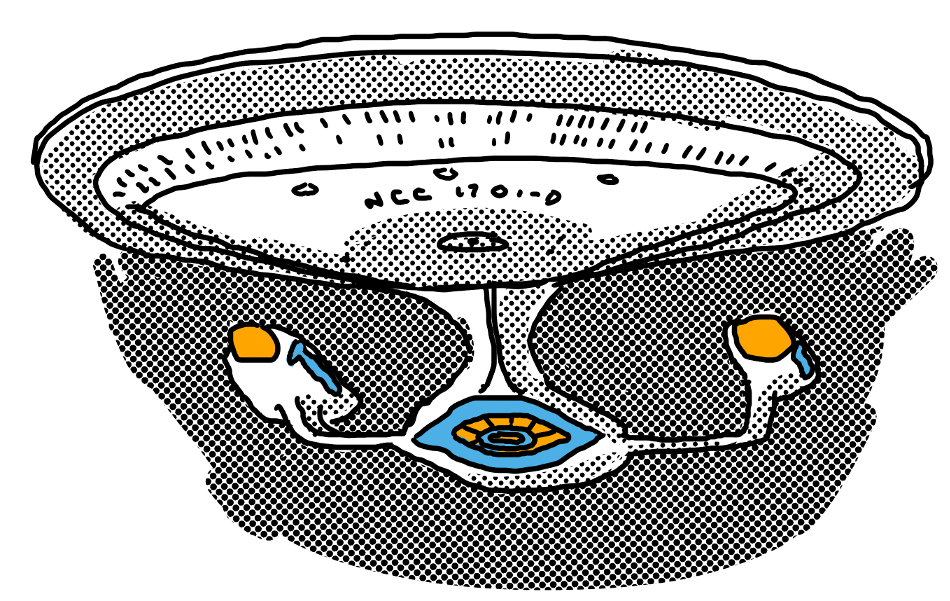
But there was one I missed: new developers interested in professional software development.
Really I should have seen it coming. For the better part of a decade, Python has provided me the best vocabulary for answering questions from motivated individuals looking for programming productivity. It's only logical that once they got the basics down, they'd want to take it to the next level.
With this end in mind, I'm pleased to announce Enterprise Software with Python (ESP), a bridging class from beginner to pro1, brought to you by O'Reilly Media and yours truly.
It's got something for everyone, but really it's designed with three groups in mind:
As the title suggests, ESP is more than a Python class. While the perspective is Pythonic and there are several examples in Python, this is a full software development course. You will find a serious effort has been made to set expectations and develop the soft skills large organizations demand. You need architectural skills to form a technical opinion, engineering skills to implement and maintain it, and managerial skills to defend it all along the way. I can't resist a good table of contents, so this is how the course is factored to address all of these:
Yes, it is a lot. I never pass on an opportunity to give a comprehensive treatment, but I'll save the whole motivation and process essay for later. For now, keep in mind that most segments are under 20 minutes, and the longest, Profiling and Performance, is only 45 minutes — shorter than most orgs' tech talks. It's all compact and practical, right down to the example repo.
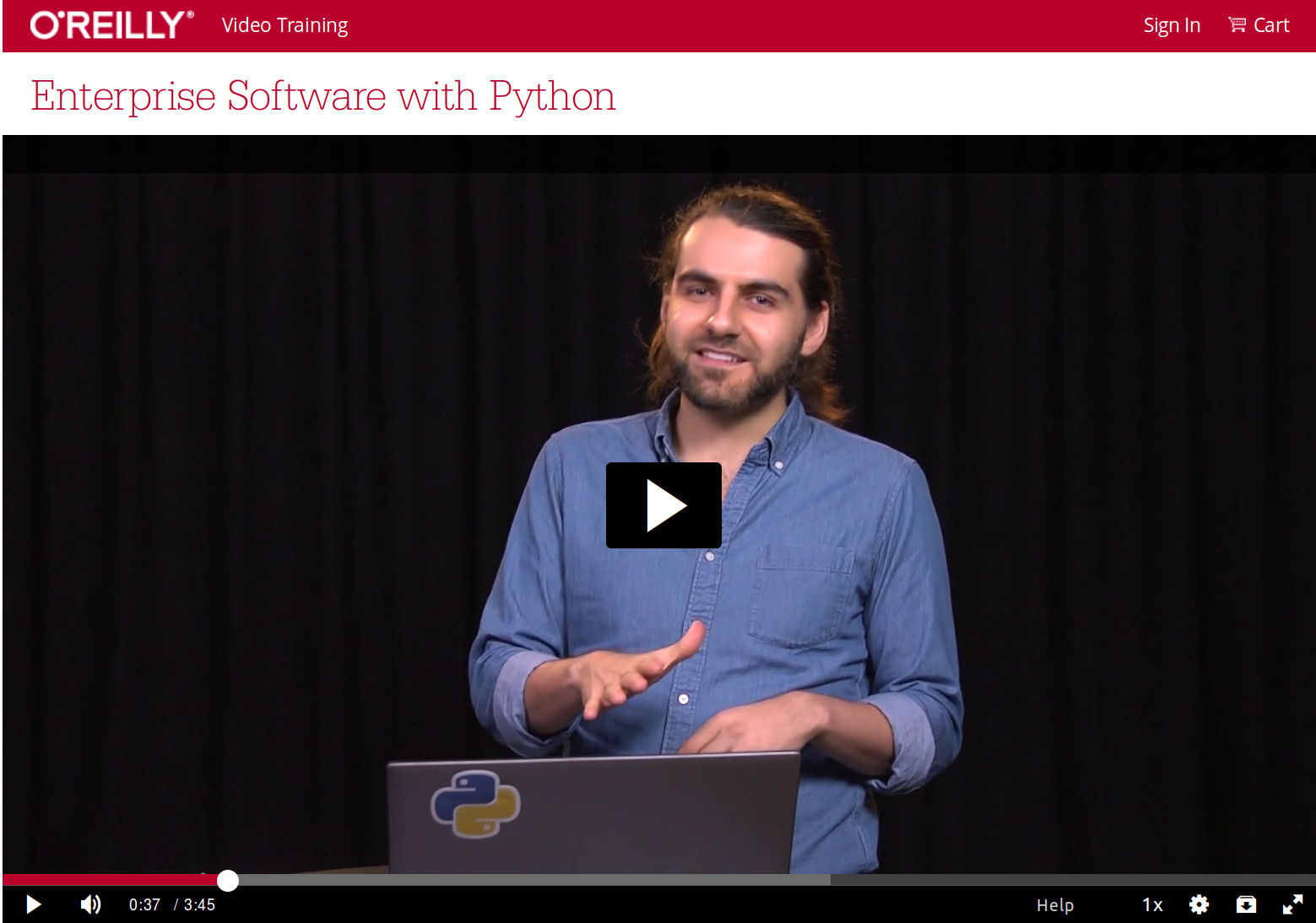
The first three parts are free, and will give you a good sense of the format, tone, and content. I kept it pretty light and approachable, complete with dozens of illustrations. Purchasers can stream the rest, and download DRM-free copies whenever you want (my personal favorite). If you have any questions or concerns, don't hesitate to reach out to me, personally, or O'Reilly Media.
I hope you'll take a look! It's already making waves at PayPal, and chances are there's someone you know who could use it, too.
This link has a 50% off coupon code, applied at checkout. Check if your organization has Safari, first. If not, use this coupon-less link and expense it! :) Safari users, try the SBO site. If you're not sure if you have Safari access, contact your technology education and training department. ↩
This target audience is me, but I know there are others out there. Send me your tiring, huddled masses yearning to learn Python. Seriously though, I can't fully quantify how much time it saves me to send a new Python initiate to a video, then have them come back with the foundations necessary to have a productive conversation. ↩
Everyone s negative comments actually paved the way for my bodybuilding success.
I've never seen anything like this. MIT wants to intervene in the FOIA release of @aaronsw Secret Service file. http://t.co/2d3U5nEv1J
Journal: PayPal, and the word "Iranian" (why our "Iranian Living Room" photography book was banned by PayPal) http://t.co/1kUb1AtsBL
At the annual meeting of Wikimedia Sweden, we decided that a video should be created about education and Wikipedia. The task of creating this video was assigned the Education Manager as a high priority. As the Education Manager then, I thought what a bliss to have such a creative task where possibilities are endless as a priority! I called up my previous drama teacher who quite recently had started up a production company with the dancing teacher and a few old pupils. They were happily to help. I was in charge of the fun (I do of course realize that we all differ in the aspect of what’s fun) aspects, such as writing a script, finding clothes to wear and playing parts.
But what was it going to be about?! Okay, I thought, people wanted it to be instructional. But all I could see blinking before my eyes was ‘BORING’. So no, no instructional video with someone simply talking or showing some Wikipedia pages (not to say that such a video may not be useful). So I began with characters. Who was going to take part in this little video? A teacher of course. And what would she be like? Ah, like someone I met at a conference who yelled at me for asking her to support the terrible Wikipedia which she knew made so much money whilst asking her poor pupils to contribute. So she was my role model.
But she also needed a savior. Someone to take her away from that negativity and to see the light and the greatness of Wikipedia. So there came the woman coming from above, and well, also in the trash can. She was just everywhere, and you couldn’t ignore her, just like Wikipedia! But then I thought, there should be something that teachers can hum, and say to each other as a jingle as to remember what to look for on Wikipedia with their pupils, and there was KÄ DI HI, which are the two first letters for references, discussion and history in Swedish. I saw in my little head a group of teachers, not totally unlike the singing von Trapp family in Sound of Music doing the Do Re Me, which had now turned into Kä, Di, Hi.
And this was the result.
We now have subtitles in English, Chinese and Portuguese for the video, with many more to come I hope. I look forward to the day when teachers and their pupils all around the world can joint the family of Wikimedia singing Kä, Di, Hi (or perhaps in English Re, Di, Hi).
Sophie Österberg, Wikipedia Education Program
Stephen LaPorteComputer please load up celery man please.
Recently, a site started making the rounds called Kit FUI — a new IMDB-like database of FUIs, fantasy or fictional UIs from TV and film. You know the ones: the virtual-reality Unix filesystem from Jurassic Park, the Terminator 2 HUD, the Esper photo analyzer from Blade Runner, and countless others.
Of course, Kit FUI wasn't the first site to track fake UIs. In 2007, Starring the Computer began indexing computers in film, many with fictional displays. Access Main Computer File started on Tumblr in 2010, and Fake UI followed in 2012.
I've linked to every one of these sites in the past, because each reminded me of an incomplete project I started in 2004, but always wished I'd finished.

In August 2004, I posted a question on Ask Metafilter asking, "Is there a website compiling framegrabs of computer screens in feature films?" The consensus was no, so I decided to do it myself.
One Metafilter member, Mike Lietz, responded that he was willing to capture some screenshots from his own DVD collection. We connected by email and got to work.
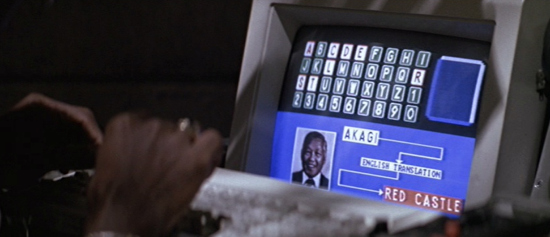
For lack of a better name, I called it "Screens on Screen" and set up the database and a simple viewer, while Mike started sending me screenshots. I built a tool for categorizing the UIs by period (past, present, or future), the platform, and what type of application they depicted. But the data entry was tedious, and Upcoming.org was starting to take off, so I put it aside. But not before Mike had captured over 1,200 screenshots from 47 films, dumped into an open directory on my server, where it stayed undiscovered for nine years.
Yesterday, on a whim, I mentioned my secret stash of screenshots on Twitter.
What's that? Oh, just my secret stash of 1,200 screenshots of computer interfaces from old movies. http://t.co/Acy1mkEQVS
— Andy Baio (@waxpancake) July 10, 2013
It immediately exploded. Even with its extremely simple directory listing, it captured people's imaginations.
Within a couple hours, three awesome geeks immediately built new ways to browse the collection.
And me? I'm absolutely giddy that people are finding new uses for a project that sat on my server ignored for nearly a decade.
Any creative person builds up a cache of unfinished projects. They usually stay hidden forever, buried and unexplored, taken to the grave.
Photographer David Friedman constantly came up with ideas he didn't have the time to pursue, so finally decided to start doing idea dumps, posting his work in its incomplete state. To his delight, several of his ideas were picked up by his readers, who went on to make them real. I shouldn't have been surprised the same thing would happen with Screens on Screen.
I'm going to take this as a personal lesson: stop hiding your imperfect and incomplete ideas for years. Stop collecting them in your head, like dying butterflies in a glass jar. It's always better to let them fly.
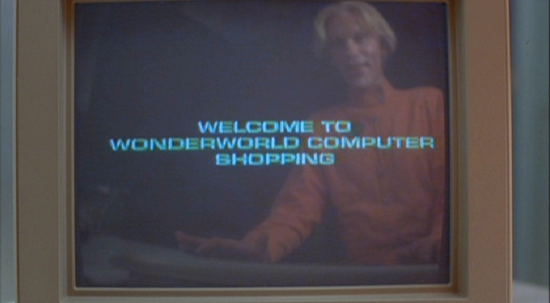
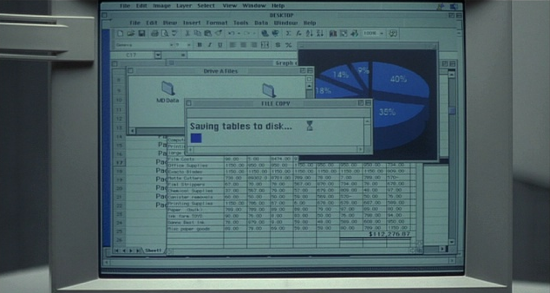
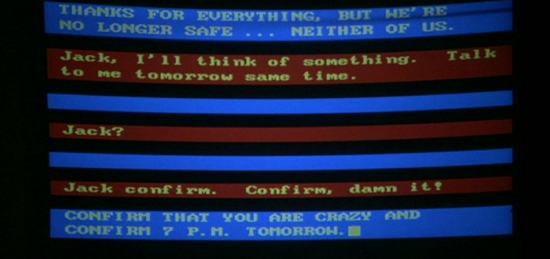

halp I can't stop http://t.co/fMIxC1Xuz0
Bismuth (Bi)
Photographer R. Tanaka has taken a number of amazing close-up photos of elements from the periodic table.
Platinum (Pt)
Sulfur (S)
Palladium (Pd)
Gold (Au)
Ruthenium (Ru)
photos by R. Tanaka
via Visual News
Stephen LaPorteHurray!
Several months ago I learned that Wikipedia Zero was nominated as a finalist for the SXSW 2013 Interactive Awards. I was obviously thrilled, since we were one of only five projects to receive this honor in the Education category. We’ve always thought of Wikipedia as an educational resource, because learning starts by providing people with knowledge and it was great to be recognized for that.
My thinking changed earlier this year when I got an email from Andrew A. McNeill, the Festival Coordinator at SXSW Interactive. He asked what I thought about switching award categories from Education to Activism. I was initially surprised by the suggestion. We focus on knowledge and education, right? Isn’t that what Wikipedia’s all about? I was so mired in day-to-day operations I never had the chance to reflect back on what we were really doing.
Activism? Really? I just had my head down, along with the rest of my team, moving our work along and doing what needed to be done.
But getting this program up and running was no easy task. We rely heavily on partners to eliminate the data cost to users to access Wikipedia on mobile devices. This involves weeks, if not months, of negotiations with mobile operators, along with various technical changes to make the program a reality. We had to educate everyone we work with about what Wikipedia is and isn’t: we do not and will not filter or censor content, and the site is maintained and improved by the community of volunteer contributors. There is no up-sell or compelling business proposition that we can really offer. This is about changing the mindset of partners, and ultimately users and the entire public. We’re working to convince people that everyone on the planet should have access to free knowledge, that this should be a fundamental human right.
That’s when I realized we weren’t just selling a program, we’re trying to shift a paradigm. In order to fulfill our mission, we had to change the way people thought about what’s important in life. We really were activists. I didn’t realize that because this is just what we needed to do.
True activism, however, must be driven at the grass-roots level and we’re beginning to see that develop. People are demanding free access to knowledge, but we need to see much more of it. Much more.
In some ways, Wikipedia Zero is different from what we’ve done in the past at the Wikimedia Foundation. Wikipedia and its sisters sites are the number five most visited website in the world (comScore Mediamatrix), and we’ve experienced phenomenal growth. However, we have never spent any resources on marketing, SEO, or other web traffic driving techniques. It has all been organic growth.
Wikipedia Zero, however, is about reaching the people who need access to knowledge and who aren’t getting it. Therefore, we have to proactively get to users, which is something we hadn’t done before. It takes enormous time, effort and will-power; it is a tremendous task to reach people in the developing world who face barriers such as cost, poor infrastructure, low-end mobile phones that aren’t data-enabled, and even those who are illiterate. We also have to invest in campaigns that drive awareness and understanding of Wikipedia, because we are trying to reach people that have had little or no exposure to it’s benefits.
I’m happy to say we are making great inroads. Wikipedia Zero is now available to 330 million mobile users around the world and we’ll be announcing more partnerships soon. We are honored that Wikipedia Zero won at SXSW and we appreciate the validation the award conveys to our efforts. But this is only the beginning. Activism is step one. Next stop, accelerating this program so it becomes a movement to benefit all of humankind.
As I said in our acceptance speech, “Thank you for keeping knowledge free,” and we need to continue to do that. Lobby your mobile operator and your government. Tell your friends. Help us make free knowledge accessible to everyone.
Kul Takanao Wadhwa, Head of Mobile, Wikimedia Foundation
The Atlas of Remote Islands is a handsome catalog of the world’s furthest removed, tiniest land masses. Though the locations themselves are real, this atlas is a work of cartographic fiction. In the book, author Judith Schalansky invents stories and lore for islands too remote to have recorded histories. She is speculating, making her the ultimate armchair traveler.
This is what it’s like to play Proteus.

Proteus opens on the ocean. In the distance, you see an island. In other fictions, it seems like the only way to get to a mysterious island is by shipwreck or plane crash. But you don’t get the sense here that you’ve arrived in a tumultuous fashion. Everything about the experience of playing Proteus feels relaxed and at peace. This is the game’s strength and weakness.

Proteus is concerned mostly with aesthetics. Its chunky sprite-based environments recall Minecraft, but with a stronger, bolder art direction. The island’s foliage expresses a bright palette of colors, its sky and sea a complementary array of soothing hues. Though the player can move around in three dimensions, many of the objects are two-dimensional. The visual disparity creates something unique and beautiful.

The game is directionless. There are no objectives or goals or directions. I found myself wandering around the island, enjoying the vistas, and discovering the wildlife — hopping frogs, flocks of chickens, singing mushrooms.
In Proteus, the player’s sense of wonder and curiosity gives the game meaning. It’s not too different from last year’s two darling semi-indie games, Journey, which was similarly interested in an aesthetic experience, and The Walking Dead, which derived its pleasures from the player’s personal satisfaction from making tough decision. Or like The Atlas of Remote Islands, where we imagine the meaning and story for ourselves.

In many ways, Proteus is a triumph of minimal interaction, but it’s even more impressive how the game compels you to explore the island without any sense of narrative. It feels like a sandbox (though technically isn’t, since Proteus has a distinct ending point). Moving around the island uncovers surprising interactions, sights, and sounds. There’s just enough around every corner to pique your curiosity. The environment reveals itself to you, and these revelations are always beautiful.

But what are these arresting sights and sounds supposed to say? If anything, Proteus is an exploration of the relationship between you and your surroundings. But that relationship is a simple one: you interact with nature, and nature responds.

The island has its own internal ecosystem. Rain clouds move in and out; the sun sets and the moon rises. But the environment doesn’t feel dynamic. The cause-and-effect relationship is limited. It is mighty pleasing to walk by a tree and have it rattle back at you, but these interactions reinforce that you are not a part of this island. You are just a visitor.

In college, I took a course on modeling climate change, which meant typing a lot of physics formulas into an Excel spreadsheet. Each week we would introduce new variables that iterated on our previous work. Being an English major forced to do very complicated things in Excel, what were probably very simple formulas looked like magic to me.
After a semester, we had a complete weather model, simulating Earth efficiently and unattractively within an XLS file. The lesson of the course was that the model was self-correcting — weather systems could survive a threshold of sudden change and intervention. But push the model too far and everything would shut down.
It’s a strange and terrifying thing to watch your model break.

Proteus is the opposite of that spreadsheet I made. It’s a breathtaking but superficial portrayal of nature; more importantly, there is no opportunity to break this ecosystem. Developers Ed Key and David Kadanga set out to create a relaxing, ambient experience. Proteus is stress-free because there is no way to do anything wrong, no way to lose. But in removing all tension between the player and the environment, the player never develops a meaningful relationship to his/her surroundings.

For most people, the distinction between vacation and travel is arbitrary, but I’ve always personally defined the two differently. The goal of vacation is to relax; to travel is to explore.
In Proteus, the key motivator is a sense of discovery. But in the end, the ways in which you can interact with the island are too shallow. It is a place you can visit, see, hear — a series of vistas — but there just wasn’t enough there to make me feel like I had understood something new. Proteus felt like a pleasant vacation, but it left me wanting to travel.

Joe Clark:
This style manual, written by Massimo Vignelli and Bob Noorda for Unimark, is the sword in the stone of transit wayfinding manuals.
Brilliant.
★If you too are a mad alchemist who plucks colour palettes out of thin air then you'll love http://t.co/YdtvQWsI from boffin @hailpixel.